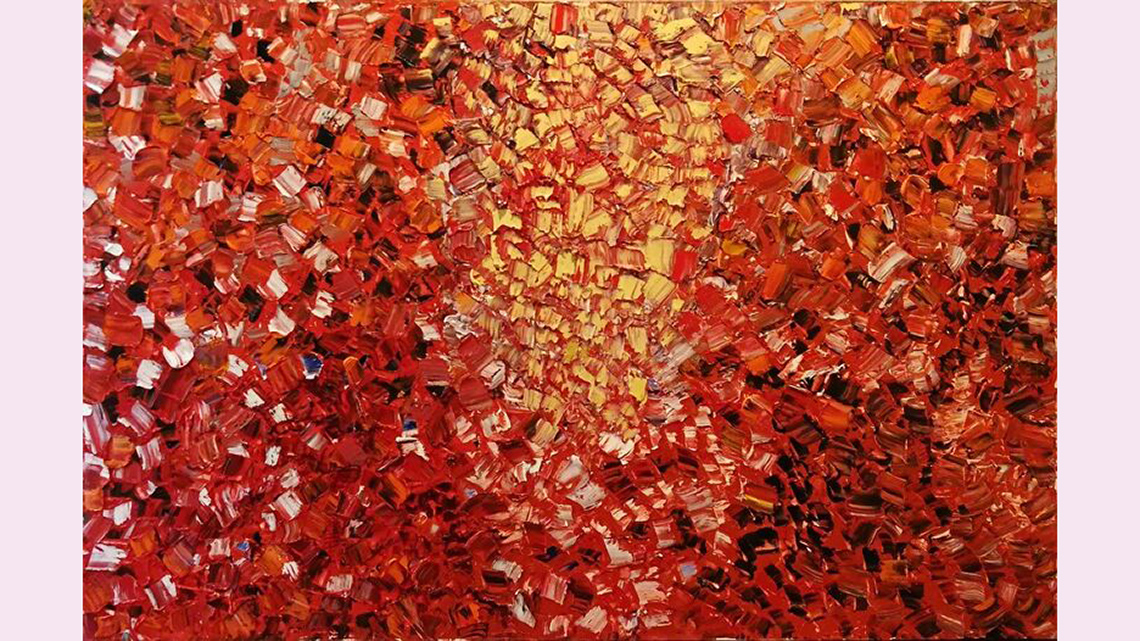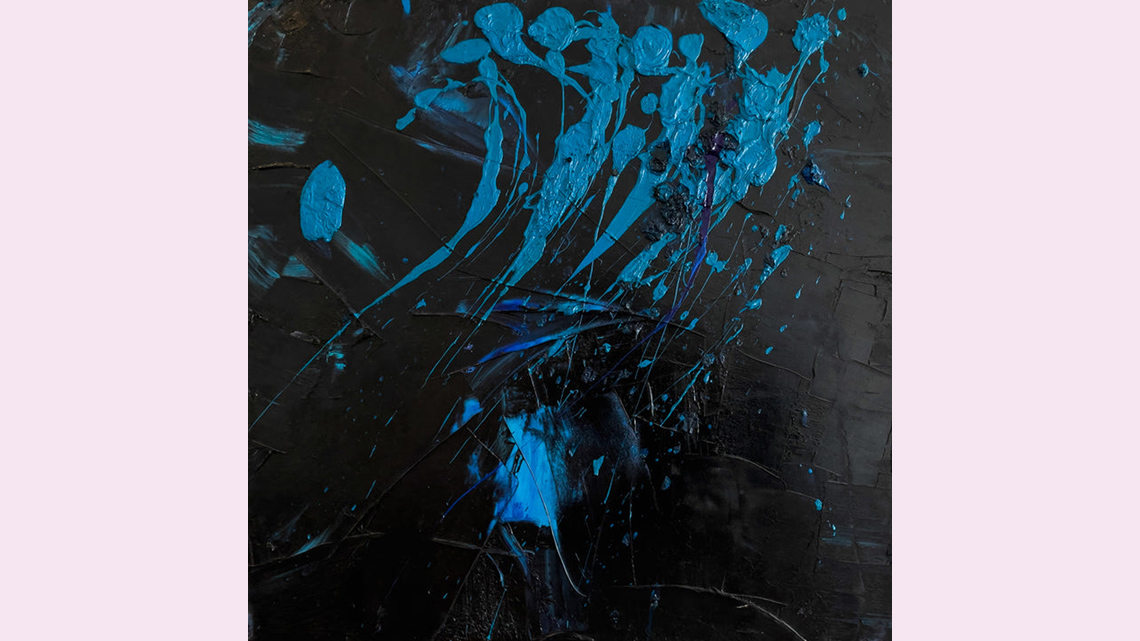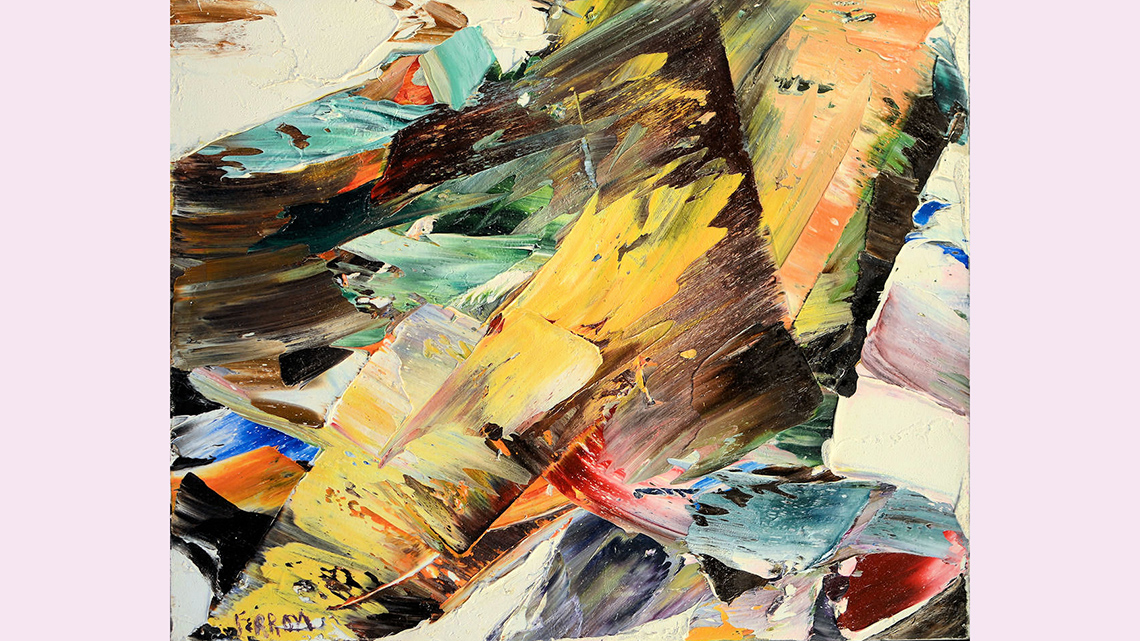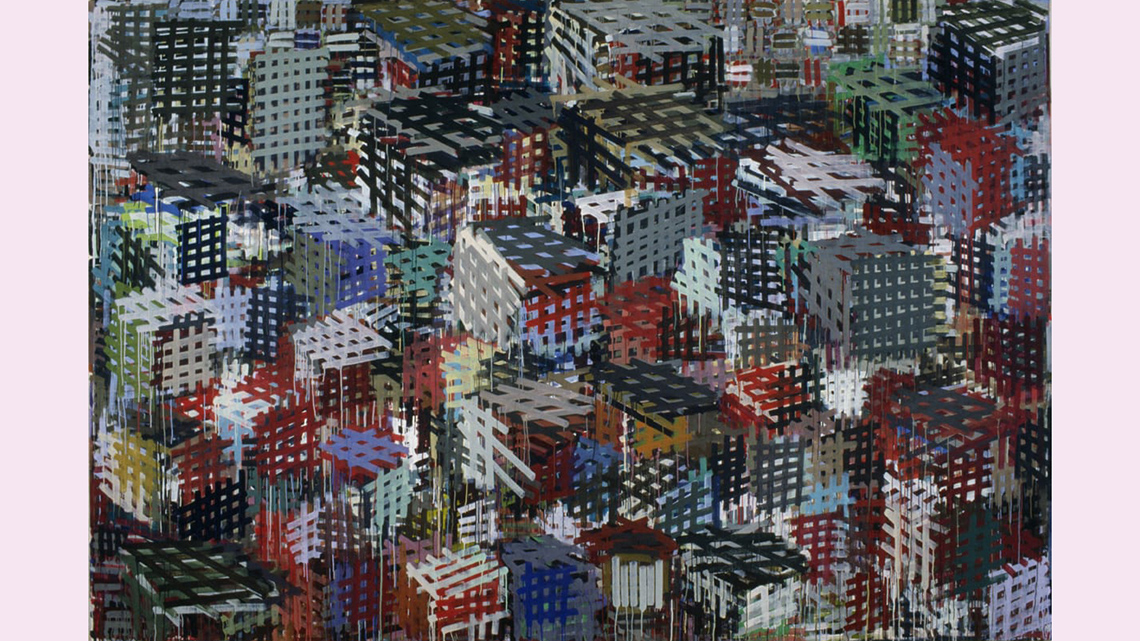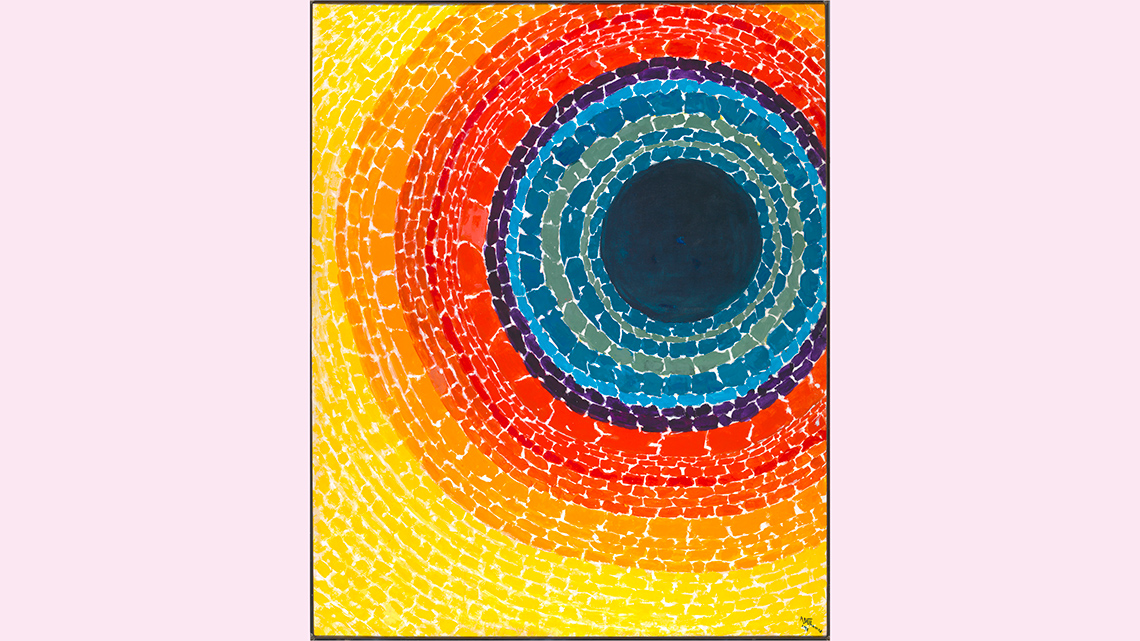Minds On
Let’s get started!
Express yourself!

Art is a form of communication. Participating in art through exposure and creation gives people the opportunity to express themselves and to learn about others. Art can be a communication outlet for anyone, as it allows us all to communicate through images and stories.
What is self-expression?
Self-expression is the sharing of one’s thoughts, feelings, and/or ideas within art, music, dance, or writing. Expressing yourself is important, and art is a great outlet for sharing thoughts and feelings.
Let’s explore how one talented individual expresses himself through art.
Aiden Lee
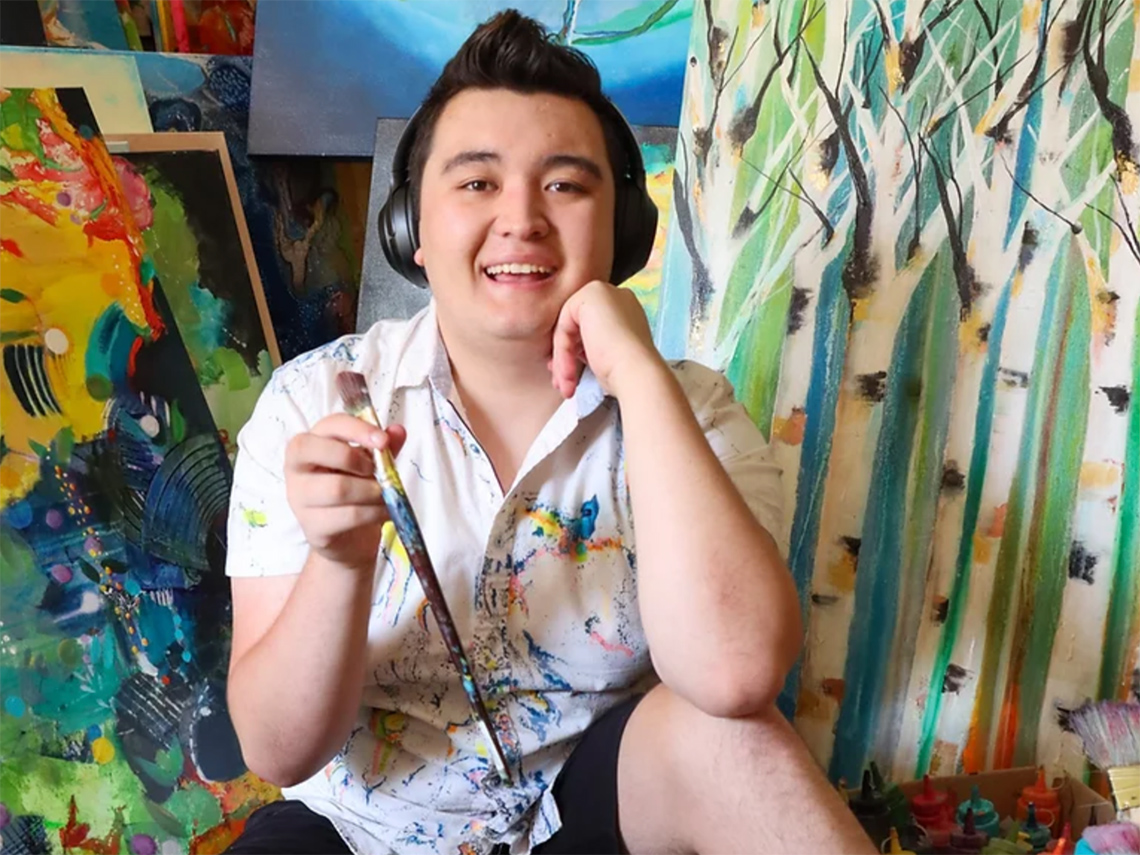
Aiden Lee
Aiden Lee is a Toronto-based abstract painter, teacher, and human advocate who uses painting to advocate for inclusion.
Abstract
A modern kind of art that does not try to represent images of the real world. Abstract art is often inspired by ideas and emotions instead of real objects or living things. Abstract art can use lines, shapes, colours, and textures to share an idea or emotion.
This is how Aiden Lee introduces himself on his website:
“My name is Aiden Lee. I am an abstract painter, teacher and human advocate. I was born with multiple diagnoses; Autism, ADHD, Anxiety.
One of the challenges I faced made it difficult to communicate and express my thoughts and feelings with those around me.
That is when I found art.
For the first time, I was able to express myself fully and it changed my life. I use different styles and mediums to create bright, bold colours, with a blend of different textures which inspire the mind, body and soul.”
– Aiden
Lee
Explore the following video clip to learn more about how Aiden Lee learned to express himself through art.
Aiden’s art is striking in its use of colour.
Colour
An element of design. In scientific terms, colour is the particular wavelength of light viewed by the eye when an object reflects or emits light. The four characteristics of colour are hue, value, intensity, and temperature. Colour categories include primary, secondary and tertiary. Colours can also be sorted into the temperatures of warm or cool colours.
Pause and Reflect
Pause and reflect
Reflect on the following questions. Record your thoughts in your art journal or using the method of your choice.
- How can art be the means to express ourselves and our emotions?
- What message do you think Aiden wants to communicate to his audience?
- What adjectives would you use to describe Aiden’s art? Hint: Adjectives are words that describe nouns (people or things). Examples are beautiful, colourful, tall, short, surprising, quiet…
Student Tips
Learn more about Aiden Lee
Do you want to learn more about Aiden Lee’s life and art? Search for his name online along with the words “Toronto artist,” and you’ll easily find his website!
Action
Get ready, get set…
Get ready to meet another young Canadian artist, Niam Jain.

Niam Jain
Jain is an accomplished young man with autism who is an abstract painter based in Toronto. Jain creates colourful and captivating oil paintings that have sold all over the world, earning critical acclaim. Niam may be non-verbal, but he shares his world with us through his art. Niam’s art focuses on texture.
Texture
An element of design. The feel, appearance, thickness, or stickiness of a surface or substance. Texture examples could be smooth, rough, furry, or soft. Texture can be the illusion of texture or real texture.
Let’s explore some of Niam’s work:
Pause and Reflect
Reflecting on Niam’s art
Consider the following questions. If possible, share your thoughts with a partner.
- How would you describe Niam’s art?
- Which element of design do you think is the most important in his paintings? Why do you think that?
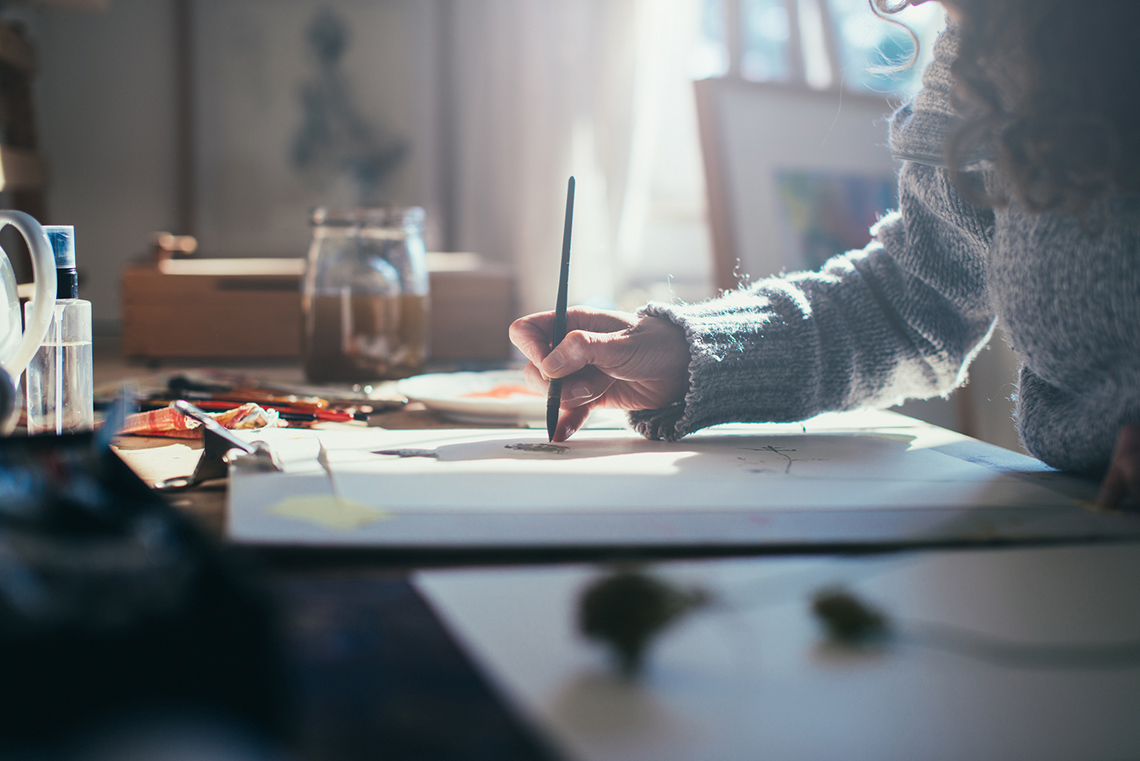
What are the elements of design?
The elements of design are the basic attributes, ideas and parts of artwork that are used to create an artwork. The seven elements are line, shape, colour, value, form, texture, and space.
Press the following tabs to check out the elements of design!

A diagram showing various types of lines and examples. Horizontal lines move from side-to-side, vertical lines move up and down, diagonal lines move at a forty-five degree angle, zigzag lines move in a lightning-bolt shape, and curved lines bend and swirl.
Lines are the paths left by a moving point, such as a pencil or a digital drawing tool. A line can be a mark, a guide, or a boundary that leads the audience’s attention in an artwork. Diversity in the type, orientation, and/or quality of lines can be used to suggest a variety of ideas, shapes, or emotions. For example, horizontal and curving lines can feel restful or inactive. Vertical and diagonal lines can create the idea of movement or action. Horizontal and vertical lines can create stability.

A diagram showing various types of shapes. Geometric shapes are traditional shapes like squares, circles, and triangles. Organic shapes are loosely defined and more free-flowing. Positive shapes are filled in their interior, and negative shapes leave an empty space around a shape.
A shape is a form that is enclosed or outlined. For example, when three lines meet they create the shape of a triangle. A shape has length and width. A shape’s boundary can be created by line, value, colour, and/or texture. Shapes may be geometric or organic.

A colour wheel with labels. Red, blue, and yellow are primary colours. Green, orange, and purple are secondary colours. Cool colours range from purple to green-yellow, and warm colours range from red-violet to yellow.
In scientific terms, colour is the particular wavelength of light viewed by the eye when an object reflects or emits light. The four characteristics of colour are hue, value, intensity, and temperature. Colour categories include primary, secondary and tertiary. Colours can also be sorted into the temperatures of warm or cool colours. Cool colours include blue, green and purple. Warm colours include red, orange and yellow.

Value is the lightness or darkness in an artwork. Value is created by the gradual changes in the lightness or darkness of an artwork even when colour is absent. Changes in value can be created by adding white or black to a colour and/or by erasing or adding more art medium to an art piece. Value is used to create the illusion of texture and light in art.

Form is the three-dimensional shape and dimensions of an artwork, or objects within an artwork. Form can also mean the illusion of a two-dimensional object being three-dimensional. A shape can appear to be a form with length, width, and height by using shading and/or perspective. Forms can be geometric or organic.

Texture is the feeling and appearance of a surface. Texture can be smooth, rough, furry, or soft. Texture can be the illusion of texture or real texture.

A diagram of a landscape showing foreground, middle ground, and background. The foreground - a cluster of bushes and ground at the bottom of the image - is closest to the viewer. The middle ground - trees, water, and animals in the middle of the image - is at the mid-point from the viewer. The background - mountains and the sky at the top of the image - are the furthest away from the viewer.
Space can be the area around, inside, or between parts of an artwork. Space can be a physical distance between objects. Space can also be an illusion of distance in a two-dimensional piece. The illusion of space can be created by a variety of techniques, including overlapping parts, a variety of sizes, changing value or colour, the use of detail, and perspective.
Using line: Brice Marden
American artist Brice Marden is known for his use of colour and line. As you examine the following artwork, what do you notice about his use of line?
Press ‘Line’ to review the definition of this element of design.
Lines are the paths left by a moving point, such as a pencil or a digital drawing tool. A line can be a mark, a guide, or a boundary that leads the audience’s attention in an artwork. Diversity in the type, orientation, and/or quality of lines can be used to suggest a variety of ideas, shapes, or emotions. For example, horizontal and curving lines can feel restful or inactive. Vertical and diagonal lines can create the idea of movement or action. Horizontal and vertical lines can create stability.
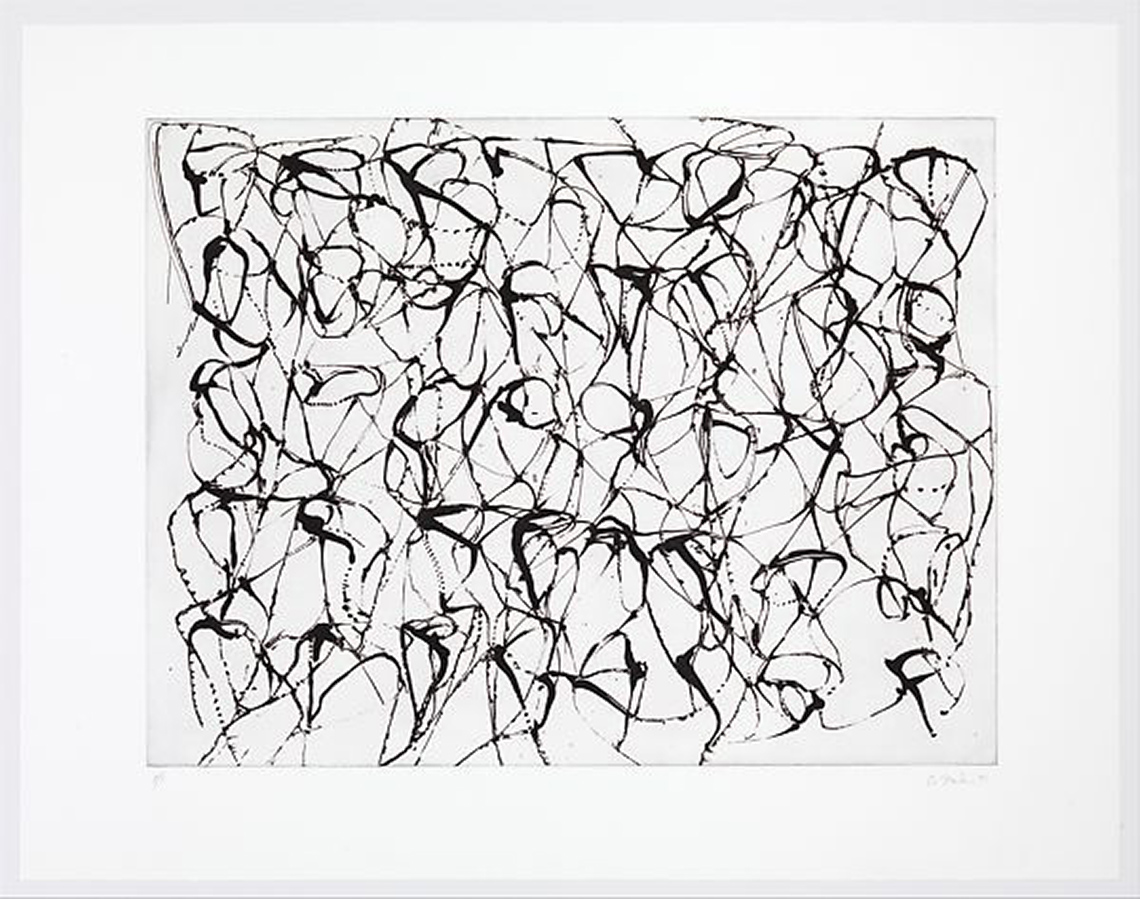
Cold Mountain Series, Zen Study 5 (Early State), Brice Marden, 1990
An abstract painting made using black lines that vary in thickness. The lines are loosely curved, and appear to have been dripped in a repeated motion over the entire art piece. The lines do not appear to represent a specific subject matter.
Student Success
Think-Pair-Share
As you study this work by Brice Marden, what do you notice about the way line is represented?
If possible, share your thoughts with a partner.
Note to teachers: See your teacher guide for collaboration tools, ideas and suggestions.
Go!
Delving deeper into abstract art
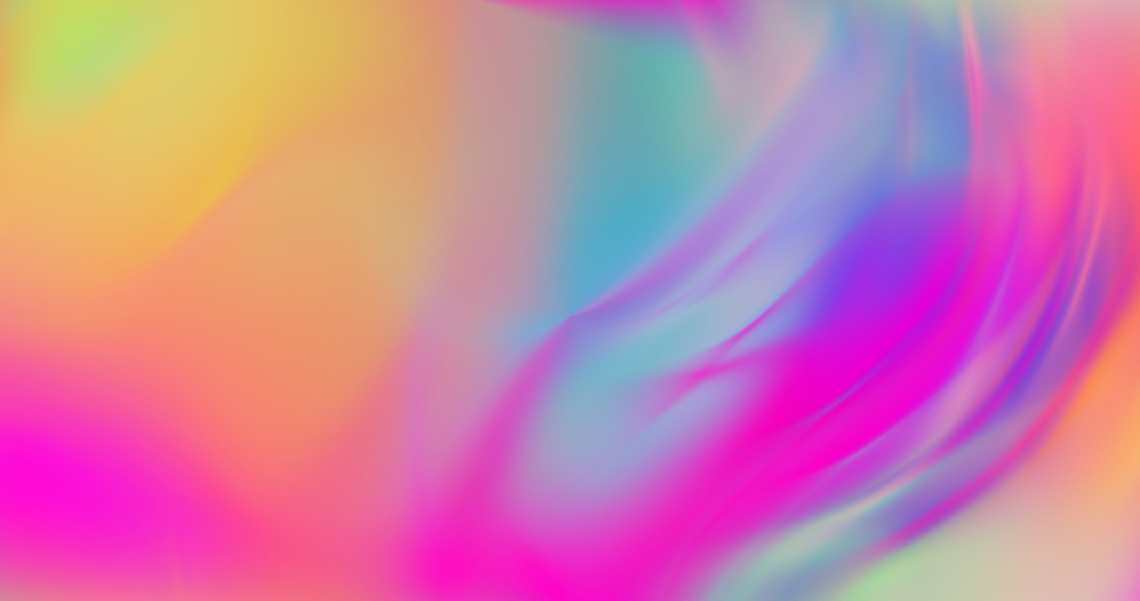
Abstract art is a style of art with no recognizable object. Abstract art uses shape, line, texture, and colours, but does not represent actual objects or living things. The artist may choose to use…
- colours in their art to convey ideas or feelings
- line to bring perspective and dimension to the art
- shape to give the composition an appealing balance
- texture as a focal point or to attract attention towards materials used in an art piece
In painting, texture can be created using different size and shapes of brushes or other tools, including sponges or even fingers.
Brainstorm
Three images: Abstract art
You are about to explore three examples of abstract art. As you do so, consider the following questions:
- What do you notice about how each artists arranged the colours, lines, and/or textures in their work?
- How would you describe the colour scheme each artist used?
If possible, share your ideas with a partner.
Press ‘Colour Scheme’ to learn more about this concept.
A colour scheme is a combination of colours used in art (for example, monochromatic or complementary).

A colour wheel which lists primary, secondary and tertiary colours. Red, blue and yellow are primary colours. Purple, green and orange are secondary colours. Blue purple, blue green, yellow green, orange yellow, orange red, and red purple are tertiary colours.
Now explore the following images:
Image 1: Hermitage, Marcell Ferron.
Dark brown, white and orange broad strokes upon which thinner yellow strokes appear. The piece also features small strokes of light and dark blue and yellow.
Image 2: Urban Jewel, Denyse Thomasos.
A painting of grids arranged to appear as buildings in a city scape. The dominant colours are black, red, light blue, beige and white.
Image 3: The Eclipse, Alma Thomas.
A radial pattern of outlined circles surrounds a dark, enclosed circle. The outlined circles closest to the enclosed circle are cool hues. The outlined circles farther from the enclosed circle are warm hues.
Consolidation
Putting it all together
Creating your abstract piece
You will be creating your own abstract art piece.
Consider the following:
- What colours, lines, textures, and patterns will you use?
- How will you add your personal and unique style to your work?
- What colour scheme (combination of colours) will you use?

Remember, colour scheme is a combination of colours used in art (for example, monochromatic or complementary).
You may create your abstract art in any way you wish. For example, you can create a digital version, a painting, or a detailed written or audio description about how you would create your art. Consider how the piece represents you.
Materials Needed
Materials needed
The following are some materials you may consider using:
- any sized sheet of paper for the medium you’re going to use, or a canvas
- paint (watercolour or acrylic)
- markers
- pencil crayons
- black fine-tip permanent markers
- pencil
Safety
Before you begin, consider these safety precautions:
Press on each tab and follow the steps described there:
- Texture like Niam Jain
- Line like Brice Marden
- Colour like Aiden Lee
Portfolio
Portfolio
Reflect on your learning in this activity.
- What do you think about your final product?
- Did you get an interesting effect?
- What elements of design did you choose to represent how you’re feeling?
Share your beautiful art with a peer, if possible.
Reflection
As you read the following descriptions, select the one that best describes your current understanding of the learning in this activity. Press the corresponding button once you have made your choice.
I feel...
Now, expand on your ideas by recording your thoughts using a voice recorder, speech-to-text, or writing tool.
When you review your notes on this learning activity later, reflect on whether you would select a different description based on your further review of the material in this learning activity.
